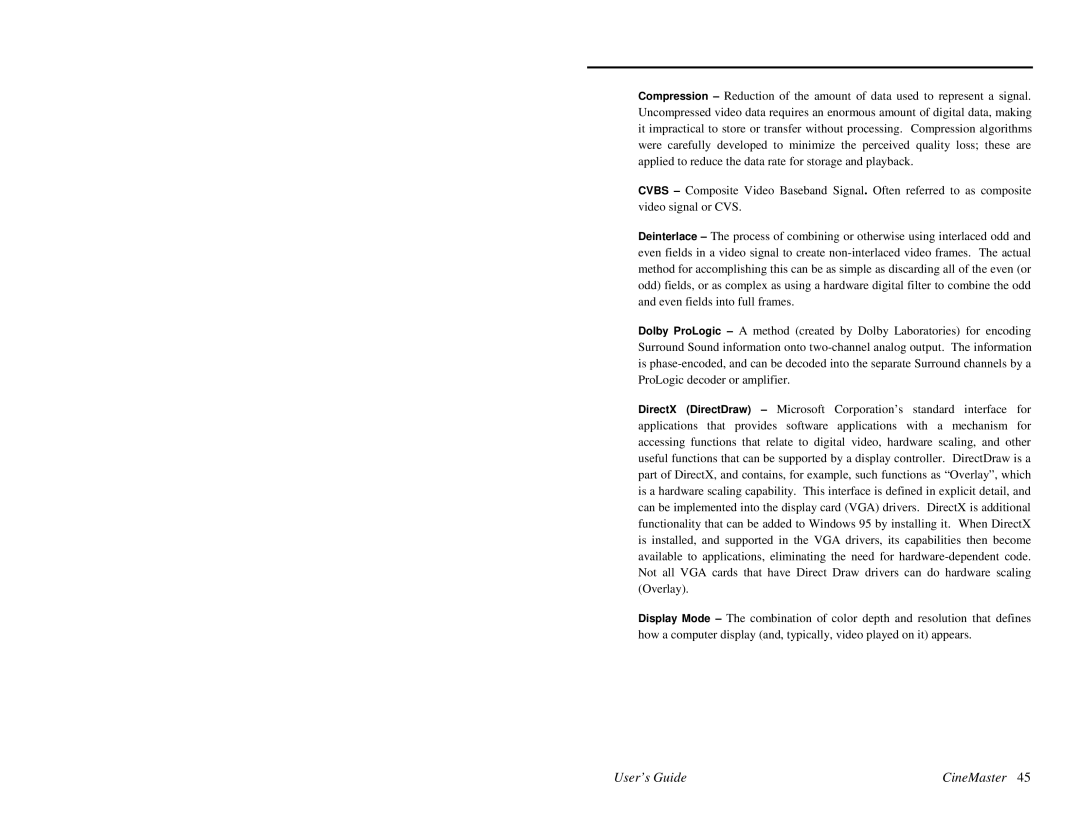Compression – Reduction of the amount of data used to represent a signal. Uncompressed video data requires an enormous amount of digital data, making it impractical to store or transfer without processing. Compression algorithms were carefully developed to minimize the perceived quality loss; these are applied to reduce the data rate for storage and playback.
CVBS – Composite Video Baseband Signal. Often referred to as composite video signal or CVS.
Deinterlace – The process of combining or otherwise using interlaced odd and even fields in a video signal to create
Dolby ProLogic – A method (created by Dolby Laboratories) for encoding Surround Sound information onto
Microsoft Corporation’s standard interface for applications that provides software applications with a mechanism for accessing functions that relate to digital video, hardware scaling, and other useful functions that can be supported by a display controller. DirectDraw is a part of DirectX, and contains, for example, such functions as “Overlay”, which is a hardware scaling capability. This interface is defined in explicit detail, and can be implemented into the display card (VGA) drivers. DirectX is additional functionality that can be added to Windows 95 by installing it. When DirectX is installed, and supported in the VGA drivers, its capabilities then become available to applications, eliminating the need for
Display Mode – The combination of color depth and resolution that defines how a computer display (and, typically, video played on it) appears.
User’s Guide | CineMaster 45 |
